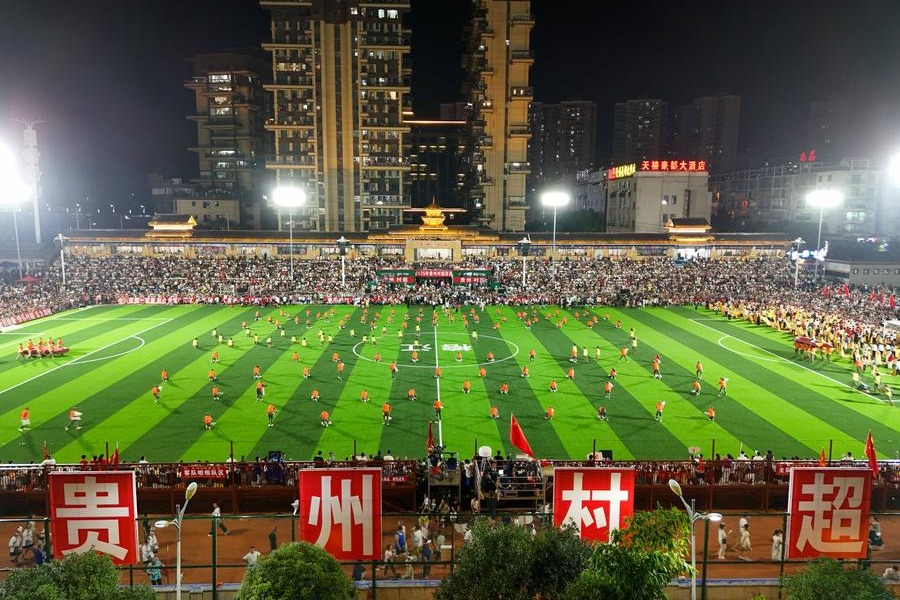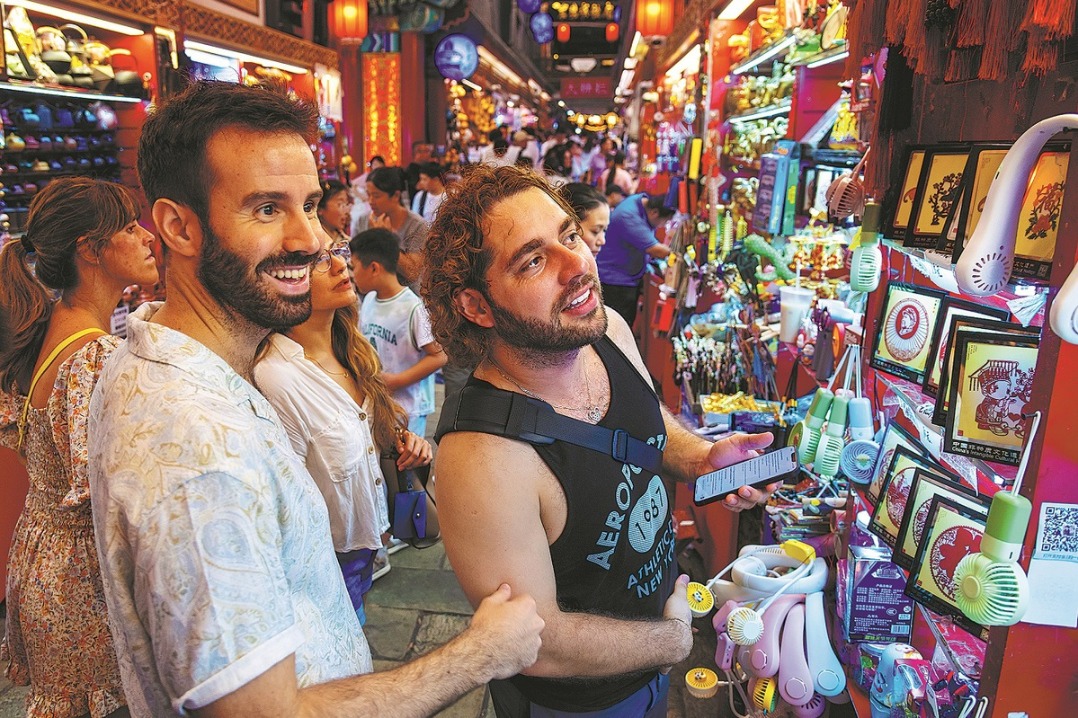What's on

Song porcelain

The making of ceramics is a work of clay and fire. The various styles of Chinese ceramics show ancient people's takes on beauty, lifestyle and the relation between humans and nature. It is through vivid colors, shapes and patterns of semi-translucent objects that people today can understand how their ancestors realized the aesthetics of their time. Lustrous and Vibrant, an exhibition now on at Chengdu Museum, Sichuan province, sheds light on the art of Song Dynasty (960-1279) porcelain, which, along with poetry, paintings and calligraphy, leveraged the cultural accomplishments of the Song era. The exhibition, which runs through October, brings together over 350 fine porcelain pieces that took shape at the renowned production hubs of the era — the Ding, Ru, Guan, Ge and Jun kilns. The monochromatic objects, glaring with elegance and serenity, well define Song aesthetics that accentuated simplicity and a leisurely way of living. The exhibition also shows ceramics from other periods in history to present an overall picture of Chinese porcelain. For example, it displays a Tang Dynasty (618-907) vase belonging to the mise (mysterious color) category. Mise porcelain normally features a grayish-green glaze, and such wares are believed to have been owned and viewed exclusively by royals.
9 am-5 pm, Tuesday to Thursday, Sunday; 9 am-8:30 pm, Friday and Saturday. 1 Xiaohe Street, Qingyang district, Chengdu, Sichuan province.028-6827-7011.
Figure paintings

Chen Hongshou, the noted painter, calligrapher and poet, lived between the late 16th and mid-17th centuries, when the Ming Dynasty (1368-1644) was overturned and the Qing Dynasty (1644-1911) was established. The instability helped shape the style of Chen's work and his views of life. Chen is best known for his figure paintings, in which his subjects often have elongated faces, a thin and weak physique, and exaggeratedly folded drapery. His approach to art suggests the setbacks he encountered in his early life, as well as the conflicts he had to deal with between pursuing social status and retiring from worldly matters. Aloofness and Curiosity, an ongoing exhibition at Xu Wei Art Gallery in Chen's native Shaoxing, Zhejiang province, is showing some 100 works and historical documents drawn from museums across the country to review his art and life. On display are dozens of Chen's figure paintings, with a glimpse of the origin and formation of his art style that elevated him such a significant position in Chinese art history, and for which his work has been highly spoken of by cultural luminaries, including Lu Xun, a leading figure of modern Chinese literature. The exhibition ends on Dec 20.
9 am-4:30 pm, closed on Mondays. Houguan Xiang Alleyway, Yuecheng district, Shaoxing, Zhejiang province.
Ink art

Ink painter Yu Qiping has created a unique world for himself by mixing emotions of daily life with his ink paintings. Titled As Real As Illusion, Yu's latest show in Beijing exhibits ink paintings he created in the past few years. Temples, luohan (Chinese term for senior disciples of Buddha), horses, furniture and accessories displayed in studies are favorite subjects of the artist. Yu likes to depict some enjoyable and relaxed moments of daily life, such as bathing, reading, sleeping and chatting with friends. Yu, who graduated from Nanjing University of the Arts, has dedicated himself to ink painting for decades. He went to Japan in 1991 and held many solo shows in galleries and museums there. The exhibition ends on Oct 30.
10:30 am-6 pm, closed on Mondays. Ici Labas art gallery, 4 Jiuxianqiao, Chaoyang district, Beijing. 130-0117-0598.
China Daily
Today's Top News
- China's industrial profits down 1.8% in H1
- Thailand responds to Trump's ceasefire call
- Recall vote shows DPP's manipulation runs against Taiwan people's will: mainland spokesperson
- Top DPRK leader visits China-DPRK Friendship Tower
- China proposes global cooperation body on AI
- Scholars propose inclusive human rights framework






























